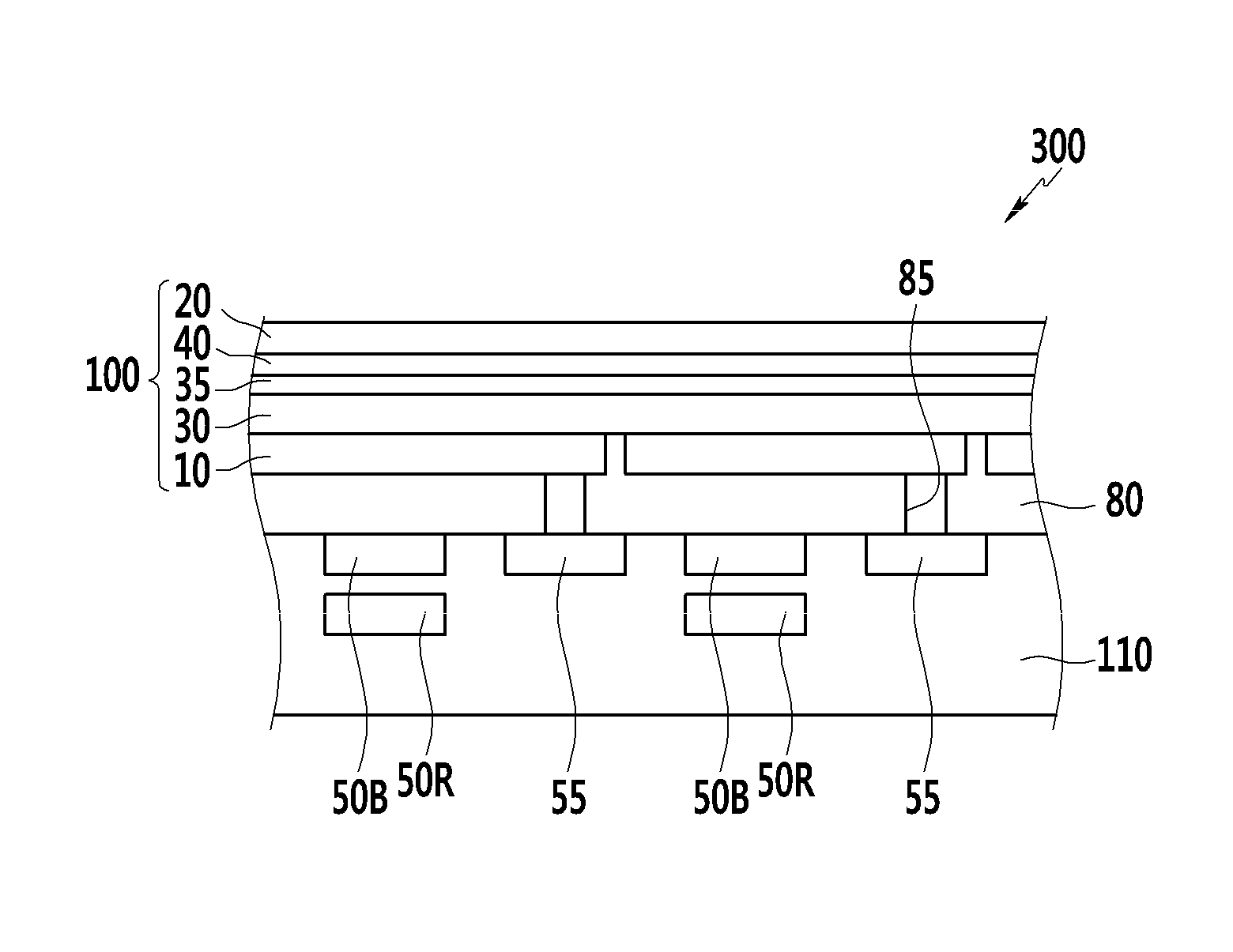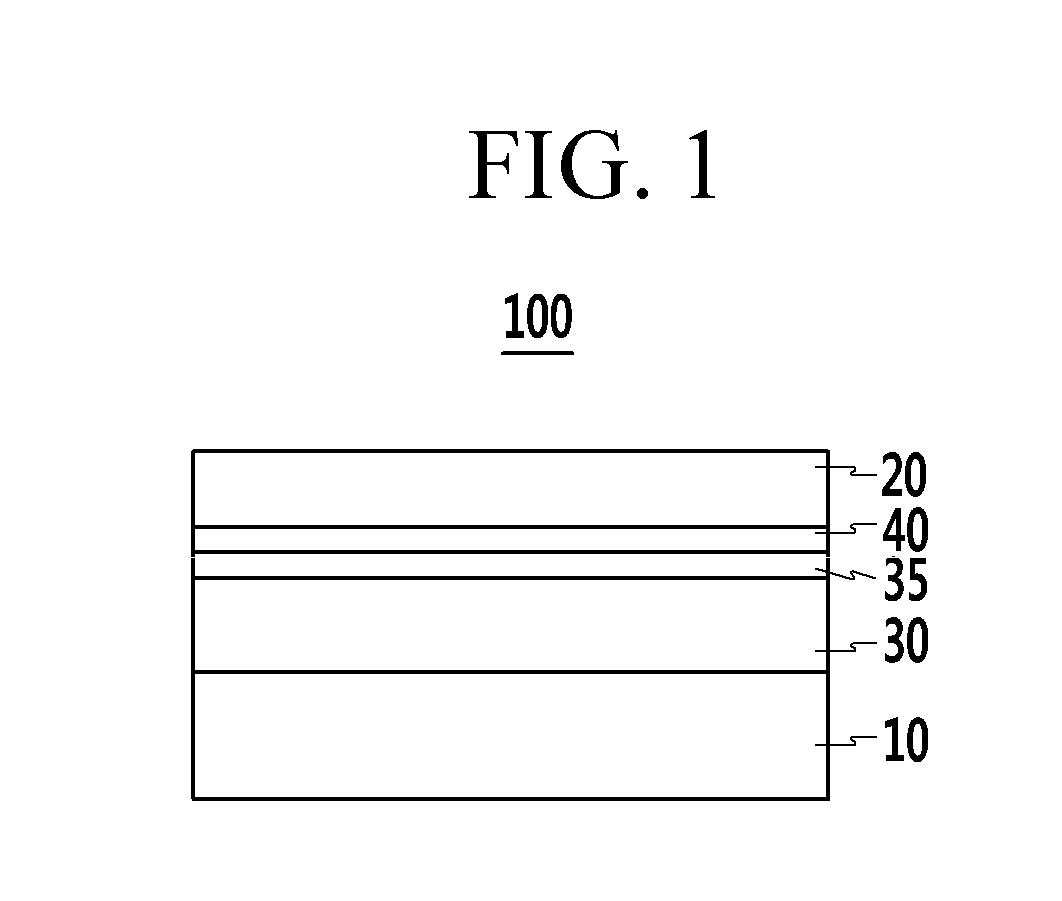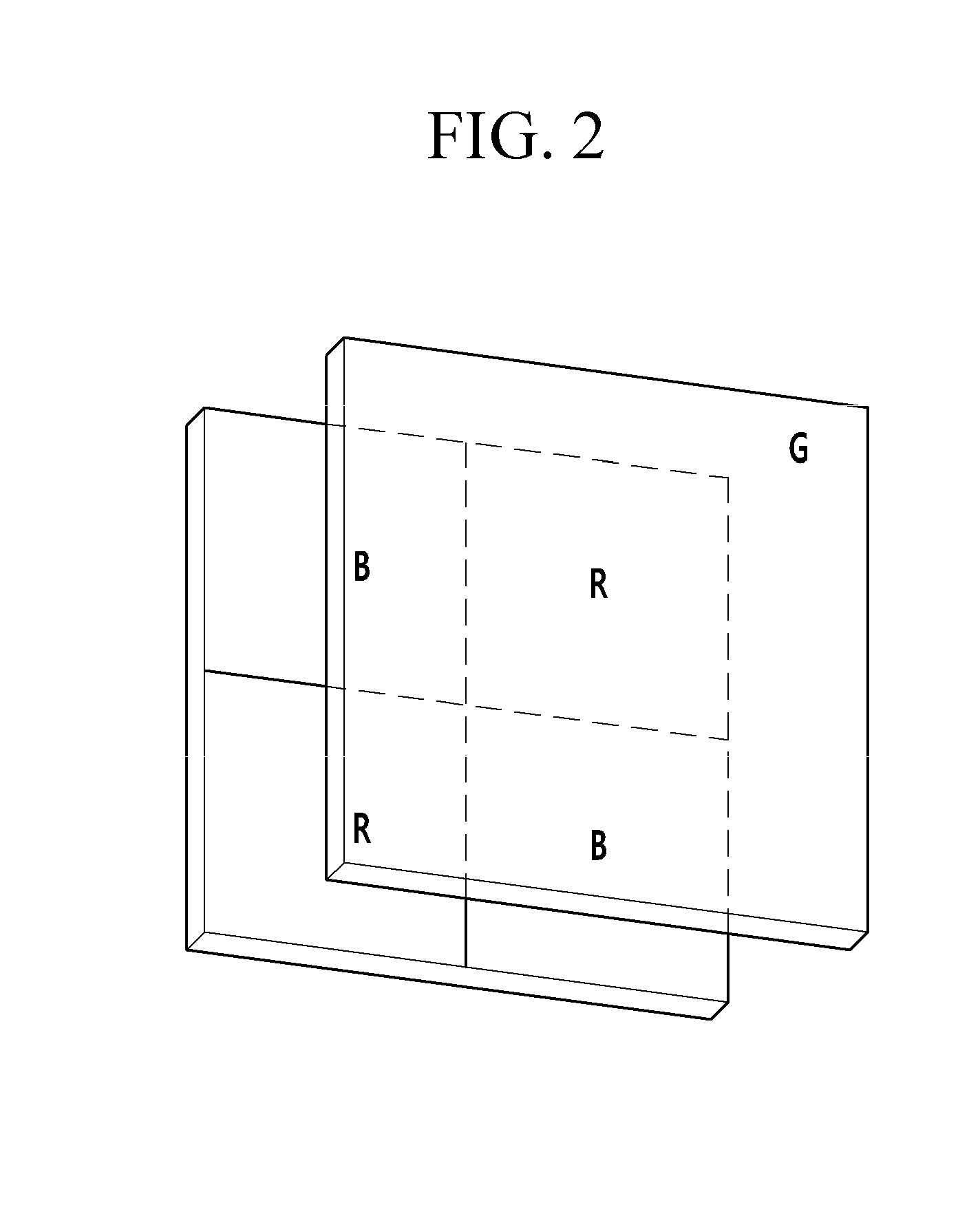Organic photoelectronic device and image sensor
an image sensor and photoelectronic technology, applied in the direction of solid-state devices, semiconductor devices, thermoelectric devices, etc., can solve the problems of deterioration of sensitivity and widespread use of silicon photodiodes, and achieve the effect of improving wavelength selectivity and improving spectral characteristics
- Summary
- Abstract
- Description
- Claims
- Application Information
AI Technical Summary
Benefits of technology
Problems solved by technology
Method used
Image
Examples
example 1
[0131]ITO is sputtered on a glass substrate to form an approximately 100 nm-thick lower electrode. Subsequently, molybdenum oxide (MoOx, 0<x≦3) and aluminum (Al) in a ratio of 1:1 (wt / wt) are thermally deposited on the lower electrode to form a 5 nm-thick electron transport layer (ETL). Subsequently, on the electron transport layer ETL, a compound represented by the following Chemical Formula 1a (LumTec, LLC) as a p-type light-absorption material, and dicyanovinyl-terthiophene (DCV3T) as a n-type light-absorption material, are co-deposited in a thickness ratio of 1:1, forming a light-absorption layer. On the light-absorption layer, a compound represented by the following Chemical Formula 1a is thermally deposited to form a light-absorption auxiliary layer, and a molybdenum oxide (MoOx, 0<x≦3) is thermally deposited thereon, forming a charge auxiliary layer. On the charge auxiliary layer, ITO is sputtered to form a 100 nm-thick upper electrode, manufacturing an organic photoelectroni...
example 2
[0132]An organic photoelectronic device is manufactured according to the same method as Example 1, except for using fullerene (C60) instead of the dicyanovinyl-terthiophene (DCV3T) as the n-type light-absorption material.
example 3
[0133]An organic photoelectronic device is manufactured according to the same method as Example 1, except for using fullerene (C60) instead of the dicyanovinyl-terthiophene (DCV3T) as the n-type light-absorption material of the light-absorption layer, and a compound represented by the following Chemical Formula 1b instead of the compound represented by the above Chemical Formula 1a for the light-absorption auxiliary layer.
[0134]The compound represented by the above Chemical Formula 1 b is synthesized by the following method.
[0135]20.0 g of boron sub-phthalocyanine chloride, 32.0 g of triphenylsilanol, and 14.8 g of trifluoromethanesulfonic acid are heated and refluxed in 150 ml of dry toluene for 15 hours. Then, 200 ml of methylene chloride is added to the resultant, the mixture is filtered, and the filtered solution is concentrated under a reduced pressure and purified through silica gel column chromatography, obtaining a compound represented by the above Chemical Formula 1 b.
PUM
 Login to View More
Login to View More Abstract
Description
Claims
Application Information
 Login to View More
Login to View More - R&D
- Intellectual Property
- Life Sciences
- Materials
- Tech Scout
- Unparalleled Data Quality
- Higher Quality Content
- 60% Fewer Hallucinations
Browse by: Latest US Patents, China's latest patents, Technical Efficacy Thesaurus, Application Domain, Technology Topic, Popular Technical Reports.
© 2025 PatSnap. All rights reserved.Legal|Privacy policy|Modern Slavery Act Transparency Statement|Sitemap|About US| Contact US: help@patsnap.com



